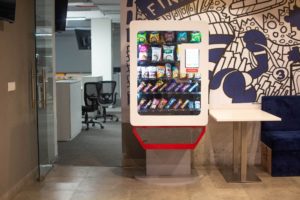Mission Nutrition: Nourishing Healthier Workplaces
“The first wealth is health!”
The popular phrase coined by Ralph Waldo Emerson has given a larger meaning of life to every individual who has been trying to maintain a healthier lifestyle.
However, with increasing workload and busy time schedules, employees often find it hard to prioritise all pieces of the wellbeing puzzle. This month at Springday, we are focusing on nutrition in particular as an important piece of the wellbeing puzzle. Mindful eating requires a proper thought process and a lot of focus. This can often be a hard thing to do, considering the stresses that life throws at us!
A survey done by The Australian Institute of Health and Welfare found that 96% of working-age Australians have at least one chronic risk disease factor, while 72% have more than one risk factor. This poses a threat to the growing economy every year, as large numbers of absentees, owing to ill-health, have the potential to slow the economy down by $7 billion each year. Nutrition can be a powerful way to combat some of these statistics
Why should nutrition be given importance in the workplace?
Eating well in one’s workplace has a significant effect on one’s overall health and well-being.
Providing healthy eating options at work is a smart and innovative way to get employees accustomed to healthy eating habits.
Moreover, as employees start returning to offices post COVID, this move is not only going to benefit the employee but the organisation as well.
Here is why:
- Increased productivity – With unhealthy eating habits, employees are expected to slow down, which will have a direct impact on the performance of the company. Healthier employees translate to increased energy, engagement and higher productivity.
- Reduced absenteeism – With healthier employees working around the clock, the number of days off due to nutrition-related ailments is bound to go down as employees are introduced to smarter nutritional hacks.
- Lower healthcare costs – Studies have shown, 7-0-75% of corporate healthcare costs are spent on diet-related diseases. Starting from physical inactivity to increased consumption of alcohol and tobacco, costs of diet-related health issues do begin to add up. Programs to combat this can result in some cost savings.
How to help your employees eat better?
Since a working individual spends around one-third of their waking hours at work (pre-COVID), workplaces have become a major space for nurturing one’s physical and mental well-being. The working environment shapes our behavior; determines how active we are and what we eat daily. Hence, businesses must take a few simple steps to ensure healthy eating amongst their employees, especially now as they are starting to return to offices.

1. Tie in eating with increased physical activity
To overcome sedentary behaviour and boost physical wellness, businesses can encourage staff to incorporate additional physical activity, especially during breaks and mealtimes. This could be as simple as encouraging employees to walk a bit further to get their morning coffee or go out to grab lunch instead of having food delivered to the office.

2. Provide healthy on-demand food
By providing healthy eating information at workplaces, eating habits of employees can be improved. Along with this, having nutritious and snacks delivered to the office can further encourage healthy eating. Workplaces can get in touch with vending machine and snack food suppliers to arrange for healthier treats so employees have the option to consume snacks that are delicious and healthy.

3. Organise events and challenges around healthy eating
Consider organising challenges around healthy eating, like the Try for 5 challenge to boost veggie intake of run a Healthy Eating Week or a seminar on World Nutrition Day. Organising healthy eating challenges once a month or hosting healthy cooking classes with nutritionists are a few fun and engaging ways to educate the staff on better nutrition. When hosting social events at work, request healthy food options, for example, choosing 100% whole grain products or reduced sugar options for treats.

4. Partner with nutritionists
As part of your EAP, provide services for employees to get free or discounted consultation with a certified nutritionist. This will help employees create healthier diet plans tailored to their physical wellbeing and their health and fitness goals and also get additional support in making nutrition a priority.

5. Keep the conversation going
The most important criteria for nurturing healthier workplaces is to always keep the conversation on. Often employees might feel discouraged with ongoing diet changes. Help overcome this by conducting weekly or monthly evaluations and assessments. Moreover, regularly circulating healthy eating program ideas and running programs to connect employees with nutritionists and dietitians can help to make nutrition more of a priority.
Healthy eating in the workplace is the first step towards nurturing employee fitness and well-being.
From skipping meals to indulging oneself with sweet treats from vending machines, employees have for long practiced unhealthy living.
With growing rate of chronic diseases, employee health is becoming a concern.
Most employees consume three important meals of the day – breakfast, lunch, and afternoon tea – during office hours.
Therefore, nutritional intake during work hours should be monitored and healthy eating habits should be encouraged.
It is time we embark on mission nutrition to take proactive measures to build a stronger and healthier workforce!
If you would like to know more about nutritional hacks from experts at Nutrition Australia, do join us for our virtual Masterclass on the 25th of February, 10 am AEDT with Anneliese Twigg.










